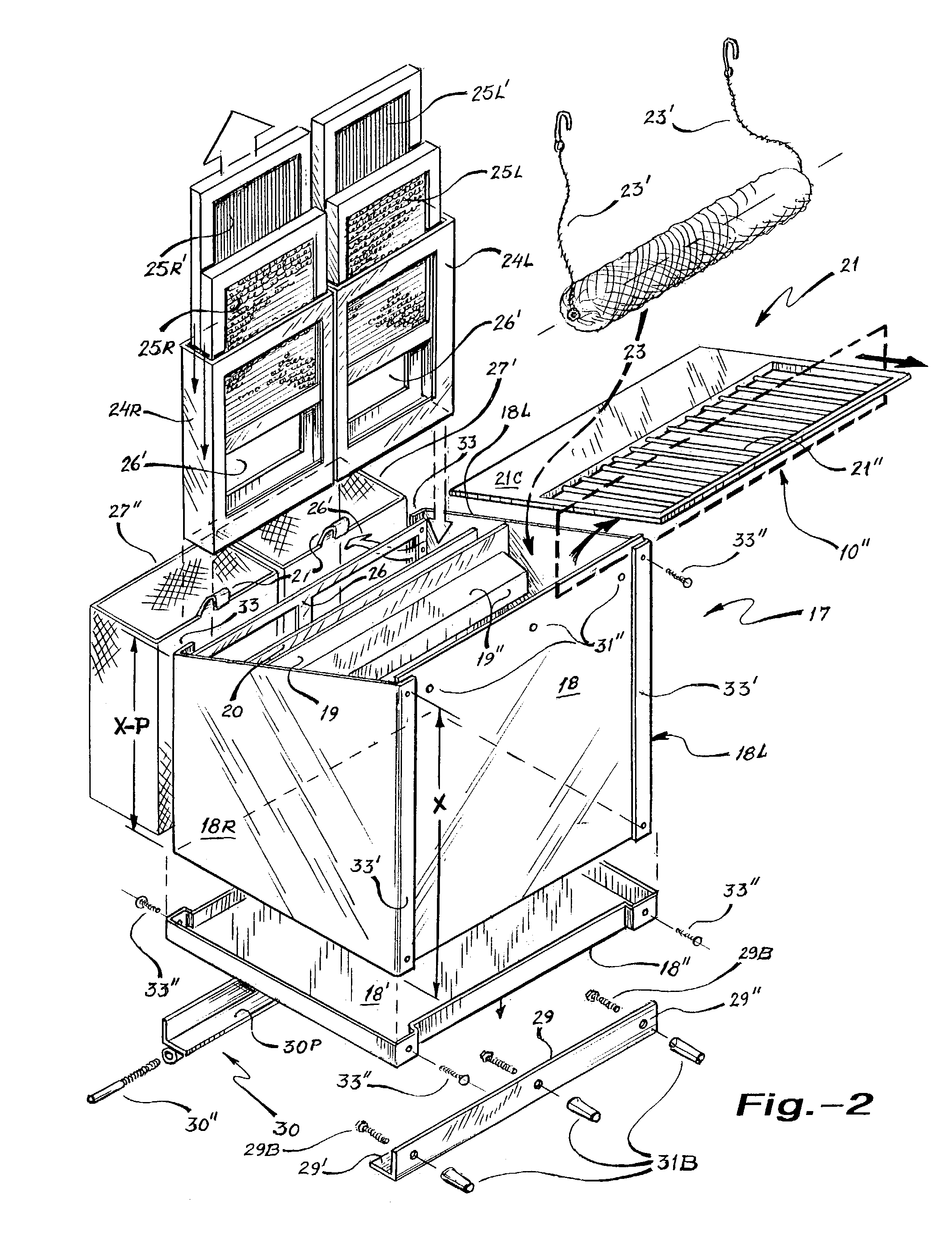Stormdrain curb-inlet multi-stage filtration-unit
a technology of stormwater and filtration unit, which is applied in the direction of sewage draining, liquid displacement, separation process, etc., can solve the problems of serious and mid-century changes in the natural hydrology of a watershed area, and is now considered a serious problem, and becomes an obvious hazard. , to achieve the effect of convenient periodic maintenance and convenient access to industrial/vacuum-cleaner hoses
- Summary
- Abstract
- Description
- Claims
- Application Information
AI Technical Summary
Benefits of technology
Problems solved by technology
Method used
Image
Examples
Embodiment Construction
[0036]The foregoing and still other objects of this invention will become fully apparent, along with various advantages and features of novelty residing in the present embodiments, from study of the following description of the variant generic species embodiments and study of the ensuing description of these embodiments. Wherein indicia of reference are shown to match related matter stated in the text, as well as the claims section annexed hereto; and accordingly, a better understanding of the invention and the variant uses is intended, by reference to the drawings, which are considered as primarily exemplary and not to be therefore construed as restrictive in nature; wherein:
[0037]FIG. 1, is a semi-diagrammatic cross-sectional upper-oblique side / elevation-view exhibiting the general environment and installation of our preferred pollutant-trap embodiment, as observed from a lateral right aspect thereof, and whereto the exemplified pre-existing drainage-chamber's entire right-sidewal...
PUM
| Property | Measurement | Unit |
|---|---|---|
| width | aaaaa | aaaaa |
| Ph-toxicity | aaaaa | aaaaa |
| concentrations | aaaaa | aaaaa |
Abstract
Description
Claims
Application Information
 Login to View More
Login to View More - R&D
- Intellectual Property
- Life Sciences
- Materials
- Tech Scout
- Unparalleled Data Quality
- Higher Quality Content
- 60% Fewer Hallucinations
Browse by: Latest US Patents, China's latest patents, Technical Efficacy Thesaurus, Application Domain, Technology Topic, Popular Technical Reports.
© 2025 PatSnap. All rights reserved.Legal|Privacy policy|Modern Slavery Act Transparency Statement|Sitemap|About US| Contact US: help@patsnap.com



